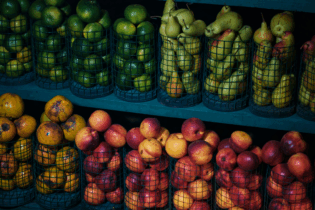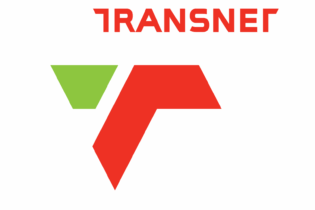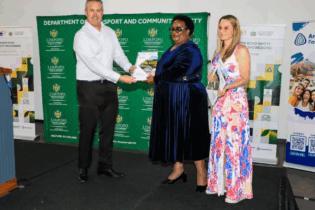8th State of Logistics survey
 Amidst change and uncertainty in glbal economies, a shift is seen towards emerging markets that have been more resilient to the economic dowturn than their counterparts in developed countries. South Africa is currently well positioned to shine as a global business partner, with the performance of it’s logistics sector being a key determinant.
This resonates with the them of South Africa’s 8th State of Logistics survey, namely ‘Gearing up for change’. The survey was released today (23 May 2012) by the Council for Scientific and Industrial Reasearch (CSIR), Imperial Logistics and Stellenbosch University.
“The South African government’s increased focus on and investment in infrastructure development have seen more than R260 billion being set aside for transport and logistics projects, ” says DR Cornelius Ruiters, Executive Director of CSIR Built Enviroment. “The effective maintenance, expansion and management of our country’s infrastructure will enable South Africa to compete at a higher level globally, ” Ruiters notes.
“For logistics to become a comptetive weapon for South Africa, change is required. We need to change fromt he mindset that logistics is merely the result of other market activity, to that of giving logistics it’s due as a value creator, ” emphasises Cobus Rossouw, Chief Integration officer of Imperial Logistics.
“South Africa is leader in complex, emerging and dynamic logistics enviroments and has achieved success despite geographical impediments, severe skills shortages and lack of economies of scale, “Rossouw says.
International standing
“This survey is one of only a handful of studies worldwide that quantify logistics costs using a modelling approach. The South African State of Logistics survey is recognised nationally and abroad as a premier reference for macro-level logistics trends in South Africa, ” explains the scientific editor and project coordinator of the 8th State of Logistics survey, Nadia Viljoen of the CSIR.
“This editoon provides and inside look into the research models, metrics and methodologies used to generate results. Comapring the reports published over the past eight years, one can track trends of a number of important logistics factors within the country. Known for it’s rigorous, independent and in-depth quantitative analyses, the survey is valuable to government decision makers and industry strategists in the logistics arena, ” notes Viljoen.
Some issues highlighted in the 8th edition of the survey include:
Tranpsort costs
Amidst change and uncertainty in glbal economies, a shift is seen towards emerging markets that have been more resilient to the economic dowturn than their counterparts in developed countries. South Africa is currently well positioned to shine as a global business partner, with the performance of it’s logistics sector being a key determinant.
This resonates with the them of South Africa’s 8th State of Logistics survey, namely ‘Gearing up for change’. The survey was released today (23 May 2012) by the Council for Scientific and Industrial Reasearch (CSIR), Imperial Logistics and Stellenbosch University.
“The South African government’s increased focus on and investment in infrastructure development have seen more than R260 billion being set aside for transport and logistics projects, ” says DR Cornelius Ruiters, Executive Director of CSIR Built Enviroment. “The effective maintenance, expansion and management of our country’s infrastructure will enable South Africa to compete at a higher level globally, ” Ruiters notes.
“For logistics to become a comptetive weapon for South Africa, change is required. We need to change fromt he mindset that logistics is merely the result of other market activity, to that of giving logistics it’s due as a value creator, ” emphasises Cobus Rossouw, Chief Integration officer of Imperial Logistics.
“South Africa is leader in complex, emerging and dynamic logistics enviroments and has achieved success despite geographical impediments, severe skills shortages and lack of economies of scale, “Rossouw says.
International standing
“This survey is one of only a handful of studies worldwide that quantify logistics costs using a modelling approach. The South African State of Logistics survey is recognised nationally and abroad as a premier reference for macro-level logistics trends in South Africa, ” explains the scientific editor and project coordinator of the 8th State of Logistics survey, Nadia Viljoen of the CSIR.
“This editoon provides and inside look into the research models, metrics and methodologies used to generate results. Comapring the reports published over the past eight years, one can track trends of a number of important logistics factors within the country. Known for it’s rigorous, independent and in-depth quantitative analyses, the survey is valuable to government decision makers and industry strategists in the logistics arena, ” notes Viljoen.
Some issues highlighted in the 8th edition of the survey include:
Tranpsort costsTransport costs are the single greatest factor impacting on South Africa’s logistics costs, comprising 53.2% of the logistics bill. South Africa is a ‘transport-hungry’ economy; if transport is not given priority as a strategic planning imperative, it could become the Achillies heel of economic growth. Research by Stellenbosch University confirms that transport costs showed a drastic increase of 16.2% during 2010, compared to 2009, while inventory carrying costs decreased by 19.9% during the same period. The changes are due to fuel price hikes and greatly reduced interest rates, respectively.
Road versus rail The shift required from transporting cargo by road to rail remains a concern. Dr Jan Havenga and Zane Simpson of Stellenbosch University have identified the uncertainty and risk relating to the fuel price as an important risk for South Afirca’s transport costs. Simpson states, “A solution to mitigating the risk associated with transport costs is a significant model shift from road to rail, but consideration should also be given to reducing transport demand.” Port access to markets Maritime connectivety is a strategic issue, with not only volumes of cargo being important, but enhanced access being key. South Africa ranks 30th out of 162 coastal countries. It is in the same league as Brazil and India, and outperforms coastal SADC countries by far in terms of maritime connectivity. This is according to the United Nations Conference on Trade and Development. In addition, the Georgia Institute of Technology found that Durban and Mauritius are far better globally connected than other ports in SADC, with Durban being on par with the port os Mumbai and Rio de Janeiro. Crop revenue loss A case study measured the range of vibrations that fruit cargo undergoes when being transported from growers in Limpopo on gravel, provincial and national roads to Pretoria and Johannesburg. Small scale farmers are more vulnerable to fruit cargo damage – they often do not have insurance and cannot absorb losses as easily as larger concerns. A second study found an incremental loss of income due to wheat-loss when transported on bad as opposd to good roads. The wheat-loss due to vibrations is estimated to amount to R2.5 million per year for South Africa. Low-carbon development A green logistics hub project developed by Imperial Logistics in the Western Cape is set to lead to substainable energy use. A photovoltaic system will power the Imperial logistics hub site for the next 20 years; solar geysers supply all hot water; and the office building design maximises sunlight use. The payback period for the pwoer system installation is less than seven years and an annual energy saving of 44% is reported. “The South African logistics sector must proactively gear up for change. Uncertainties facing the local sector should be tackled head-on to maintain reputation as a strong, emerging logistics performer despite massive challenges, ” concludes the CSIR’s Nadia Viljoen.






